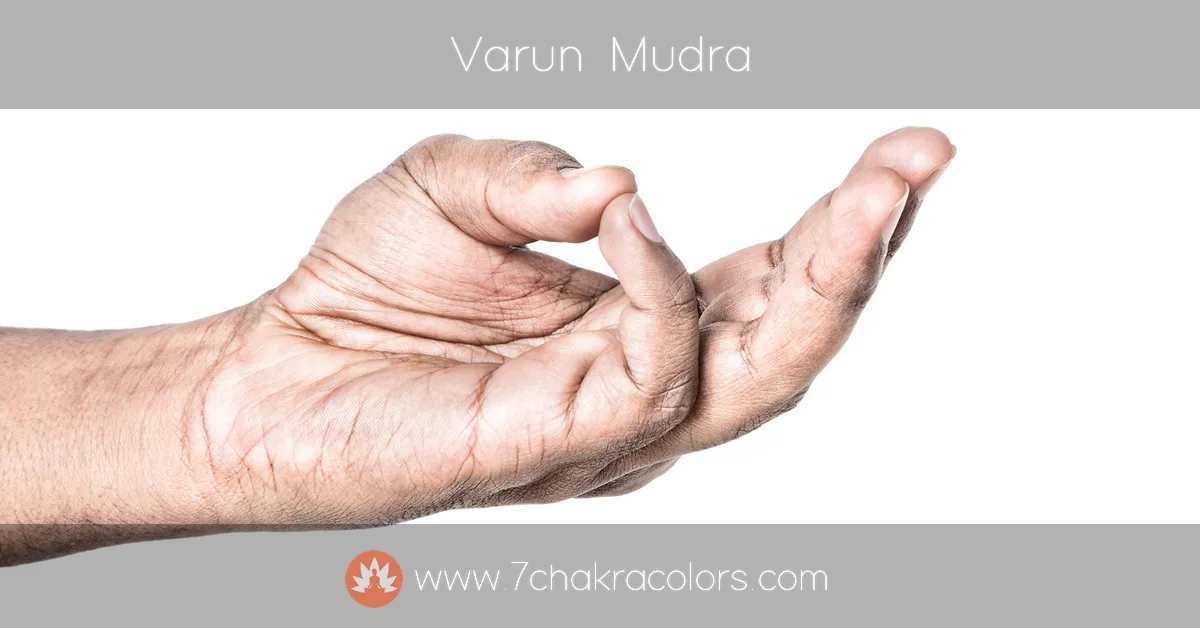

Varun Mudra, or ‘Water Mudra,’ symbolizes the water element and promotes fluidity, adaptability, and emotional balance. Practicing this hand gesture helps individuals connect with their emotions and supports hydration and overall well-being.
Varun Mudra, commonly known as the "Water Mudra," is a significant hand gesture in yoga and meditation practices that represents the element of water. This mudra is believed to embody qualities of fluidity, adaptability, and emotional balance. By practicing Varun Mudra, individuals can cultivate a deeper connection with their emotional states and promote overall hydration in the body.
If you want to discover more about how different mudras can influence your energy, explore our in-depth Chakra Hand Gestures resource. You'll find valuable insights and techniques to enhance your practice!
To practice Varun Mudra, begin by sitting comfortably in a serene environment with a straight back and relaxed shoulders. Bring your hands to your lap or resting on your knees. Extend your little finger while gently pressing the tip of the thumb against the tip of the little finger, while the other fingers remain extended and relaxed. This gesture creates a channel for the flow of water energy.
As you hold this position, close your eyes and take slow, deep breaths. Visualize the refreshing qualities of water as you inhale, feeling its soothing energy. With each exhale, imagine releasing tension or emotional blockages. Maintain this mudra for several minutes, allowing the calming energy to wash over you.
The Varun Mudra offers a wide array of benefits, particularly in promoting emotional stability and enhancing hydration in the body. Engaging in this mudra can help alleviate feelings of anxiety and stress by encouraging a state of calm and relaxation. It acts as a gentle reminder to embrace fluidity and adaptability in life's challenges.
Moreover, this mudra is known to support physical health by improving water retention and maintaining the body’s overall hydration balance. Practitioners often experience an increase in energy and vitality, as well as enhanced clarity of thought and emotional resilience.
Varun Mudra can be practiced during meditation, yoga sessions, or at any moment when you feel the need to restore balance and emotional clarity. It is particularly effective during times of stress or when experiencing emotional turbulence.
For best results, incorporate Varun Mudra into your daily routine for about 5 to 10 minutes. Consistent practice can enhance your ability to navigate emotional challenges and maintain a state of balance and tranquility.
The symbolism of Varun Mudra is deeply rooted in its representation of the water element, which signifies adaptability, intuition, and emotional flow. The gesture serves as a reminder of the importance of being in tune with one’s emotions and the natural ebb and flow of life.
Additionally, Varun Mudra embodies the essence of surrender and acceptance, encouraging practitioners to let go of rigidity and embrace change. By engaging in this mudra, individuals commit to nurturing their emotional well-being and cultivating resilience.
Varun Mudra is primarily associated with the Sacral Chakra (Svadhisthana), which is linked to creativity and emotional balance. By harmonizing these energy centers, practitioners can foster a deeper understanding of their emotions, enabling them to express themselves authentically and connect with their creative essence.
This mudra also resonates with the Throat Chakra (Vishuddha), which governs communication and self-expression. Activating this chakra through the mudra can facilitate clearer articulation of emotions and enhance interpersonal connections.